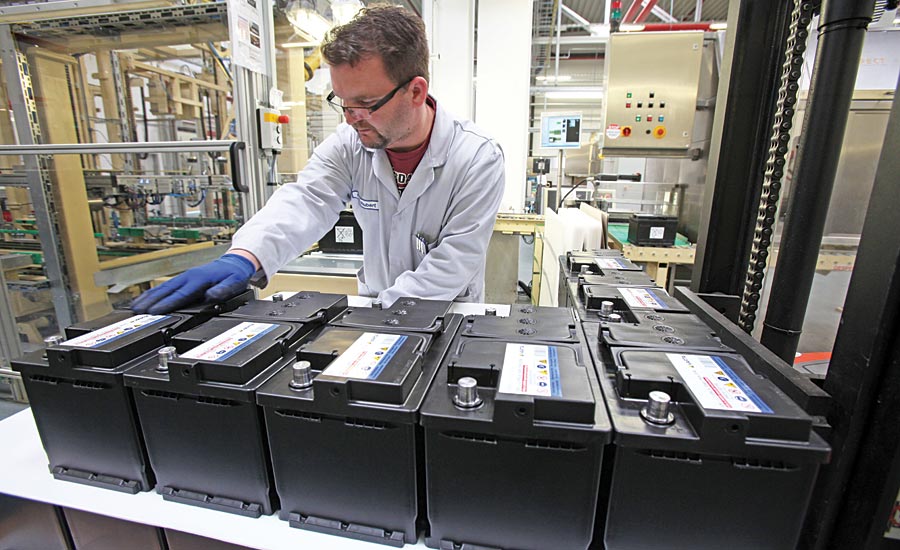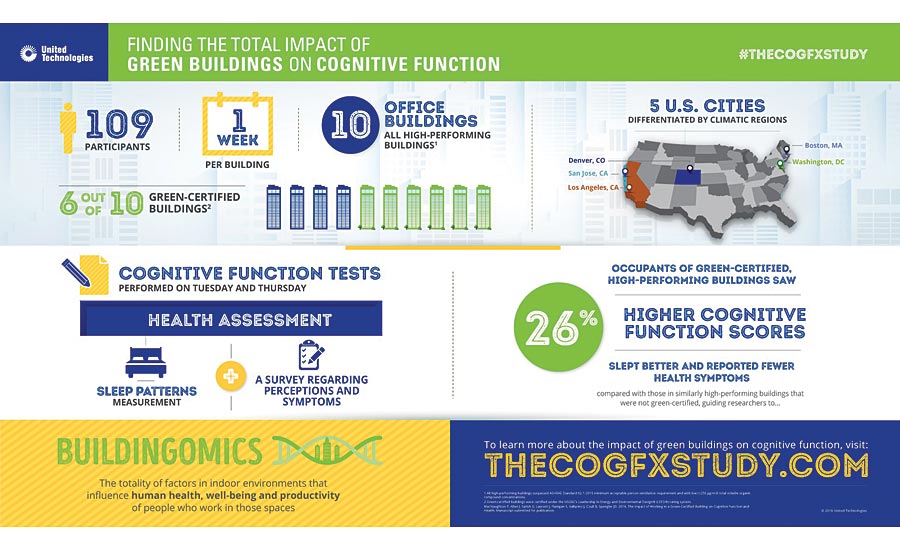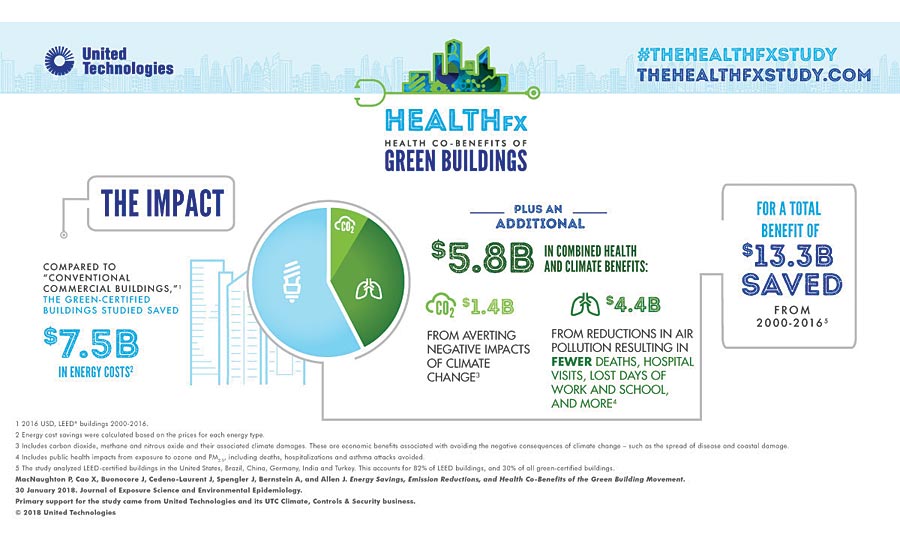Last year, the U.S. Department of Energy (DOE) introduced the Better Practice and Better Project awards to honor exceptional energy-efficiency solutions.
Charter Steel, Saint-Gobain, Johnson Controls, United Technologies, Nissan, and Harley-Davidson each received the Better Practice Award, which recognizes outstanding accomplishments in implementing and promoting the practices, principles, and procedures of energy management in industry. The Better Project Award, which highlights achievements in implementing energy-efficiency projects at individual facilities, went to C.F. Martin & Company, Eastman Chemical Company, Ingersoll Rand, the Narragansett Bay Commission, and the Victor Valley Wastewater Reclamation Authority.
All of the winners participate in the DOE Better Buildings’ Better Practice Program and Challenge, which partners with American manufacturers and water utilities to improve energy efficiency and competitiveness in the industrial sector.
This year, Quality reached out to two of the awardees, Johnson Controls and United Technologies, to see how their multifaceted energy and sustainability initiatives are shaping up.
According to the DOE, Johnson Controls merited their Better Practice Award for establishing a company-wide Energy Hunt program, which resulted in a threefold increase in identified energy savings projects and helped the company meet its Better Plants Challenge goal two years early. United Technologies earned the same honor for creating the Natural Leader energy efficiency improvement program, which has saved millions in cumulative energy costs.

Absorbent Glass Mat batteries (AGM) are ideal for Start Stop systems due to their cycling performance. With $550 million in investments between 2011 and 2020, Johnson Controls is implementing plans to expand AGM production capacity worldwide. Source: Johnson Controls
Johnson Controls
Since Warren Johnson invented the electric thermostat in 1885, Johnson Controls International Plc, currently headquartered in Cork, Ireland, has been committed to improving energy efficiency in buildings, including in their own manufacturing facilities.
As a longtime producer of automotive parts such as batteries and HVAC equipment for buildings, the company also is part of the U.S. Environmental Agency (EPA)’s Green Power Partnership program, which encourages organizations to use green power as a way to reduce the environmental impacts associated with conventional electricity use.
According to Clay Nesler, vice president of energy and sustainability at Johnson Controls, the company is increasingly purchasing green power, either directly from utilities or through renewable energy certificates (RECs), and installing solar panels in their manufacturing facilities. Nesler also views power purchase agreements (PPAs) as “very innovative models for being able to increase investment.”
But job number one for Johnson Controls in terms of energy, Nesler says, is the combination of energy productivity improvements and reducing waste—and then, based on reduced energy footprint, being able to more cost-effectively use renewable energy to balance the scale.

Johnson Controls’ 12-volt Lithium-ion technology helps automakers to meet fuel efficiency and emissions regulations. Here, a worker assembles a li-ion battery pack at Johnson Controls’ Holland, MI facility. Source: Johnson Controls
Reducing Energy Intensity (EI)
Upon joining the EPA Climate Leaders program in 2002, Johnson Controls set a 10-year goal to reduce greenhouse gas emissions by 25 percent. Six years later, they’d already reached their goal, reducing both carbon and energy, Nesler says.
With the Better Plants Challenge, which began in 2009, Johnson Controls made another 10-year commitment, this time to 25 percent reduction in energy intensity (EI), or energy consumption. This time, they reached their goal in seven years.
“A lot of people are concerned about making that second commitment, that they would have harvested all of the low-hanging fruit—lighting upgrades, fixing leaks and compressors—and that it will become increasingly expensive and more difficult to achieve,” Nesler says. “And that hasn’t been our experience. We like to say that the low-hanging fruit grows very quickly.”
“Every couple years there’s a new technology change,” Nesler continues. “We went from T12s to T8s, from T8s to T5s, and then to LED lighting in our plants; and there have been similar improvements for controls in manufacturing facilities and technologies for monitoring compressed air. We’ve really been able to maintain our savings.”
Improving Energy Productivity (EP)
Johnson Controls’ current energy commitment, launched in 2016, is the EP100 (short for Energy Productivity 100). Headed by the company’s Climate Group and the Alliance to Save Energy in the U.S., the EP100 includes a global portfolio of businesses that have agreed to double their energy productivity within 25 years, or increase it by 2.5 percent annually, by investing in power-saving equipment and technology. Johnson Controls was the first U.S. business to sign the EP100 pledge, Nesler says, and the company committed to double its EP by 2030.
As Nesler explains, EP is the inverse of EI: your revenue divided by your energy use, in gigajoules or BTUs or whatever unit you want to use.
“In 21 years, we’re going to hit 50 percent energy intensity improvement, which is equivalent to 100 percent energy productivity improvement,” Nesler continues. “And this time, we’re including our entire global footprint in the commitment.”

Researchers at Harvard University’s T.H. Chan School of Public Health and SUNY Upstate Medical University found that working in green-certified buildings was associated with higher cognitive function scores, fewer sick building symptoms, and higher sleep quality scores. Source: United Technologies
Focusing on Quality, Community
One of the company’s implementation models is the Energy Hunt program, which Nesler calls a “light version” of ISO 50001, the energy management standard. He adds that the process came in part from what Johnson Controls learned from one of its previous suppliers, Toyota, and from the best business practices already employed by Johnson Controls’ quality team.
“The tool we use for logging projects and tracking savings is the same tool we use within our quality teams for continuous improvement, and we use Kaizan processes to identify opportunities,” Nesler says. “We’ve been able to find a tremendous synergy between the quality practices we’ve applied in our plants and the energy and sustainability practices.”
At the same time, Johnson Controls is dedicated to helping smaller suppliers—particularly small and medium-sized enterprises that are women and minority-owned, Nesler says—achieve their energy goals.
“If you look at the environmental footprint of our operations–energy, water, waste, carbon–our upstream supply chain uses five times as much energy as our own internal operations,” Nesler says. “So we have 5-1 leverage in taking our best practices to our suppliers and helping them.”
“We’re doing exactly what Toyota did for us a decade ago,” he continues. “We go to our suppliers and offer them technical assistance, because we want them to be as efficient as possible. It puts them in a better cost position, makes them more competitive, and it stimulates jobs in their local communities, which are often very close to our local communities.”
Leveraging Digitalization
That Johnson Controls manufactures computerized energy management systems and advanced HVAC building control systems also gives the company leg-up, as its own technologies power its facilities worldwide.
With Johnson Controls’ own energy metering and monitoring systems, Nesler explains, “we can collect all of the data and analyze it: we can compare energy use shift by shift, by day of the week, and across different parts of the plant; and we’re able to benchmark our energy use performance and compare to different plants in different regions.”
Nesler believes that the combination of a structured process with goals, accountability, key performance indicators, and the ability to report—essentially, the whole Plan, Do, Check, Act (PDCA) quality process from American engineer W. Edwards Deming—is essential to reaping the benefits of digitalization.
“Just collecting the data and putting it on a pretty dashboard and displaying it in the lobby of the plant will not result in energy savings,” Nesler insists. “You need to build it into a process—just like you build quality metrics into a quality process, or environmental metrics into an environmental management system.”
“Building data analytics and energy metering into an energy management system is the best way to maximize performance,” he continues, “and we’ve proven that to be the case across our global enterprise.”
United Technologies
In 1988, United Technologies Corporation (UTC) was among the first companies in the U.S. to set energy reduction goals in factories and to publicly declare tracked progress on those goals. According to John Mandyck, chief sustainability officer at UTC, tracking progress eventually led to more formal goal-setting, in order to reduce the environmental health and safety impacts of UTC’s manufacturing operations.
“The latest goal set on which we’re operating we can measure back to 1997; since that time, we’ve tripled the size of our business,” says Mandyck. “Over that same period, we reduced our water consumption by 62 percent and our greenhouse gas emissions by 33 percent. And given that track record, we can see that we’re on the trajectory to reduce our greenhouse gas emissions by 80 percent by 2050.”

Over a 16-year period, Harvard researchers studied a subset of green-certified buildings in six countries: the U.S., China, India, Brazil, Germany and Turkey. Known as HEALTHfx, the study found nearly $6 billion in combined health and climate benefits. Source: United Technologies
Making Business Sense
Headquartered in Farmington, CT with facilities worldwide, UTC researches, develops, and manufactures aerospace systems, aircraft engines, elevators, escalators, HVAC, and building systems, among other products. According to Mandyck, one of the keys to the company’s success is setting big, bold energy goals at the central, corporate level, and then allowing factory managers at the decentralized, local levels to develop their own strategies to achieve them.
“A couple of years ago, when announcing our goals for 2020, we declared that we would reduce our greenhouse gas emission by 15 percent over five years, or 3 percent a year,” Mandyck says. “We hold our factory managers accountable for this 3 percent per year reduction over a five-year period, but we don’t tell them how to do it. That leads to creativity and market conditions on what makes sense at the right place.”
“In some places we have factories employing renewable energy strategies that are cost-effective; in other places, we have factories changing out lighting and air compressors for more energy efficient devices within the factories,” Mandyck continues. “There’s no strategy we’ve found that works across all of our global operations. But the secret sauce that has worked for us is setting these big goals and allowing local management to find the best, most cost-effective ways to meet them.”
In addition, Mandyck says that UTC embraces renewable forms of energy where it makes sense at the local level and where it’s cost-effective. For example, one of UTC’s Carrier factories in France became the first in that country to sign a contract for 100 percent renewable power.
“In other places, we’ve tried to do solar and the paybacks haven’t been so good,” Mandyck explains, “So it’s really on a case-by-case basis with what makes sense with the local geography.”
“The money we use or the investments we use to lower our greenhouse gases comes from the same pot of money that we use for research and development, and for acquisitions,” he continues. “So, it has to make business sense; and this is why we’re really optimistic about the future of sustainability. We’ve seen that we can significantly grow our business while at the same time significantly reducing our greenhouse gas emissions, and in a cost-effective way.”
Propelling Green Aviation
A big trend that UTC is reacting to and developing technologies for, Mandyck says, is a historic ramp in the aviation industry.
“We think we’re in a big, connected world, but the fact of the matter is that less than 18 percent of the world’s population has stepped foot on an airplane,” Mandyck says. “And because of urbanization and rising global incomes, the forecast is that aviation will double in the next 20 years. And we look at that and we say, as one of the world’s largest providers of aviation technologies, ‘How can we provide technologies to accommodate that ramp in a more sustainable way?’”
According to Mandyck, UTC defines green aviation as comprising three essential components. The first starts on the ground by improving the energy efficiency of airports
“A large airport will use as much energy as a city of 100,000 people; they’re very energy intensive operations” Mandyck explains, “So we look at ways to reduce energy intensity at airports through very high efficiency HVAC systems, or through very energy efficient elevator and escalator systems from our Building Systems groups that can help airports meet lower carbon goals.”
The second component is reducing the aviation factory footprint, Mandyck says, and the third is greening aviation in the air. For the latter, UTC employs a three-pronged approach.
“First, what are the breakthrough technologies needed to accommodate this historic growth in aviation in a more sustainable way?” Mandyck says. “Our answer to that is new jet engine technology.”
UTC has invested more than $10 million to develop and bring to market the new Geared Turbofan jet engine, which reduces fuel burn by 16 percent, NOx emissions by 50 percent, and noise footprint by 75 percent. And Mandyck predicts that by 2050, “our jet engine onboard our customers’ airplanes will save 15 billion gallons of fuel, which is enough fuel to go to Mars and back.”
Second, the UTC Aerospace Systems Group holistically examines how it can reduce the weight of the components in its systems. “Because we know it’s a simple equation less weight equals less fuel burn,” Mandyck says. He gives the example of wing actuators: the mechanical devices that move the wing flaps on an airplane. Previous technologies for wing actuators were pneumatically driven, but UTC made them electronically driven, thus eliminating the need for hundreds of pounds of cables, tubes, hoses, and oil on the aircraft.
Third, UTC investigates how it can make aircraft more intelligent, such as providing sensors that give pilots real-time data on what’s going on with the plane outside of the cockpit.
One of those sensors, for example, senses headwinds. “So, if the aircraft moves into a flight pattern that has stronger headwinds than expected, the pilot has the ability to plot a different route—and use less fuel by literally finding a path of lower resistance.” Mandyck says. “That’s what intelligent aircraft are doing today, and what they’ll do in the future.”
Accelerating Green Buildings, Cities
Green aviation is one of three sustainability platforms at UTC. The others focus on green buildings and the future of food, though all three fit each of the technology platforms of the company itself and align with the company’s overall goal of helping the world to urbanize in a more sustainable way.
“What we’re seeing around the world—and that we don’t often see or hear or feel in the United States—are two global megatrends that are fundamentally reshaping societies and economies in real time: population growth and urbanization,” Mandyck says. “In the next 35 years, we’re going to grow our global population 35 percent. By 2050, there will be more than 9 billion people on the planet, and nearly 70 percent of those people will live in cities. So, these trends have big implications for environmental sustainability and the ways that we can meet urbanization in a more sustainable way.”
UTC was the first company to join the U.S. Green Building Council in 1993. Back then, that was the only national green building in the world, Mandyck says. Today, there are nearly 100.
“This is a global movement that is transforming real estate,” Mandyck continues. “[UTC has] been in it and supporting it since the beginning and we continue to do so today, because we know green buildings are a big answer for how we can urbanize more sustainably.”
Take UTC’s Otis elevator brand. “Otis moves the equivalent of the world’s population every three days, Mandyck says. “You need energy to send an elevator up, but it’s going to come down by itself; we also know that gravity can be a source of free energy. [UTC was] one of the first companies to put regenerative drives on our elevators to capture the energy creating through gravity on the ride down and repurpose it to send the elevator back up—and in doing that, reduce elevator energy consumption by 75 percent.”
UTC’s focus on green buildings also extends to green cities, and thus, to the future of food. As the co-author of Food Foolish: The Hidden Connection between Food Waste, Hunger, and Climate Change, Mandyck is well-versed in this issue, and believes that UTC has a significant role to play in answering what he calls “one of biggest questions of our time,” which is how to feed a growing population.
With increasing urbanization, people are moving farther away from their food sources; . But since UTC is a world leader in refrigeration technologies, Mandyck says that the company is exploring ways to make sure that more food gets from the farm to our forks—since less than 10 percent of the world’s perishable foods are refrigerated today.
“I believe the most sustainable way to feed the planet is to avoid the tremendous amount of food waste that we have around the world,” Mandyck says. “We grow and produce enough food to feed 10 billion people on the planet. We live on a planet of 7 billion, and only about 6 billion get enough food. So that 40 percent inefficiency is the food that is lost or wasted every day, and refrigeration technologies are a key way that we can extend the world’s food supply to feed more people.” Q




